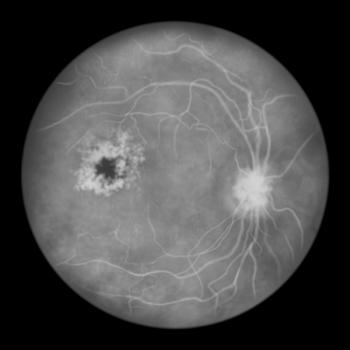
Drug Interaction Software Wrongly Flags Embeda, PRN Opioid Combination
Monitoring and evaluating the therapeutic relevance of drug interactions is an important mission for any practicing pharmacist.
Monitoring and evaluating the therapeutic relevance of drug interactions is an important mission for any practicing pharmacist.
Computer systems have become increasingly more complex as new medications and formulations appear on the market. Pharmacists must exercise judgement every minute of filling or checking prescriptions irrespective of a computer alert, because this is one area where artificial intelligence is contrived at best. Relying on computers to interpret the results of combined medications and make clinical judgements in real patients could be a disaster.
Over the last decade, deaths from opioid abuse have increased dramatically. In fact, the National Institute of Drug Abuse found a 4-fold increase in the total number of opioid-related deaths, resulting in what many call an “opioid epidemic.”
One outcome has been increased movement towards developing brand-name medications with abuse-deterrent formulations (ADFs). An earlier Pharmacy Times commentary entitled "
An important question to ponder is whether or not our computer systems understand ADFs. The answer is: obviously not!
Let’s start with the simplest example of a pharmacy computer software system that identifies the combination of furosemide, digoxin, and potassium as a significant drug interaction. When entered into the system simultaneously, the software tells us there is a drug interaction. That is, furosemide causes hypokalemia; digoxin has a narrow toxicity index; digoxin toxicity is more prevalent in the presence of hypokalemia; and so on.
However, the computer neither acknowledges the patient's potassium supplement to mitigate risk of hypokalemia, nor matches an adequate potassium dose against specific patient variables. Hold onto your hats, pharmacists, because we won’t be so easily replaced by computers.
Fast forward to computer technology and ADFs. A patient (TP) presents to the pharmacy with a prescription for the ADF Embeda. TP’s physician also prescribed hydrocodone/acetaminophen 5/325 mg dosed as 1 to 2 tablets every 6 hours as needed for breakthrough pain with Embeda 30/1.2 mg dosed as 1 capsule taken with dinner during a dosage titration period.
The combination was allowed until TP’s pain became adequately controlled. TP presents to the pharmacy at 8:30 pm and asks the pharmacist to fill these prescriptions. The pharmacist enters the prescriptions into the computer system electronically, counts the correct amount from each of the bottles, and then moves onto the verification step.
At this point, a large red box flags her screen, indicating this drug interaction: “one or more of the components of Embeda is contraindicated with the use of an opiate, contact physician.”5,6
Lexicomp considers Embeda and hydrocodone/acetaminophen to have a major severity rating and recommends therapy modification. This information comes from the package insert of Vivitrol, a brand-name version of naltrexone.
The recommendation from Lexicomp is to discontinue use of naltrexone in order to achieve optimal analgesic effect from the opiate. In this situation, the patient would have to cease use of Embeda and only use an immediate-release form of hydrocodone/acetaminophen or an alternative extended-release opioid. 8,9
Micromedex states there is good documentation that concurrent use of Embeda and immediate-release opioids is contraindicated.3, 8,9 This program actually says naltrexone and concurrent use of any opioids is contraindicated because this combination may cause opioid withdrawal symptoms and decreased opioid effectiveness. By this logic, Embeda interacts with itself!
The bottom line is that the computer system and the Lexicomp are flawed.
Many community pharmacies use similar programs that have built-in interactions, the products of which are generalizations by drug class, allowing pharmacists to quickly be alerted of and interpret the interaction.
Another potentially fatal example is a patient receiving methadone for chronic pain who receives a new prescription for telaprevir. This is a drug interaction that won’t even be identified in most, if not all, computer systems in part because p-glycoprotein (pGP) interactions are not generally embedded into the software platform.
Telaprevir inhibits CYP3A4 and pGP, while methadone is a 3A4 and pGP substrate. Co-administration of these medications leads to increased methadone levels due to a decrease efflux from the gut, increased serum levels due to decreased 3A4 metabolism, and increased passage across the blood-brain barrier due to pGT.
A similar drug interaction occurs with rifampin and morphine, as morphine also depends on pGP for absorption. In this case, rifampin induces pGP, which decreases the absorption of morphine significantly. The potential outcome is overt withdrawal symptoms. 2,7
Embeda is an extended-release morphine formulation encapsulated in beads which contain the sequestered antagonist naltrexone covered within a polymer coat. Under normal circumstances, this coat stays intact and protects against naltrexone release into the body.
According to Embeda clinical trials, the sequestered naltrexone is not absorbed into the body unless the product is manipulated and abused. “When Embeda is taken as prescribed, the naltrexone exerts no clinically significant effect.”
This results in an extended-release morphine capsule that mitigates abuse risk by way of crushing to receive the entire dose all at once orally or by injection. In either case, the naltrexone would be released and block the mu-2 opioid receptors, which of course would cause withdrawal. 9,10
Referring back to the aforementioned scenario, the pharmacist now refuses to fill the prescription until she hears from the physician regarding this interaction. Now, imagine it is Friday evening and the patient must go 3 days without pain medication. The computerized system has done its job efficiently; it has discovered a drug interaction that may result in increased harm to the patient. The pharmacist must appropriately interpret what the software says and make a clinical judgement, which in this case is irrelevant!
Calling the prescriber in this scenario because of a drug interaction between hydrocodone and naltrexone is actually embarrassing, as the same logic dictates Embeda interacts with itself because of the morphine. But, if the patient was given a month supply of each, an astute pharmacist might consider calling the prescriber for a different reason. That is, if this patient is taking Embeda because of substance abuse risk, why in the world would you provide a month supply of hydrocodone during the titration period?
During the phone call, the pharmacist might also recommend that this patient receive a prescription for home naloxone auto-injector, which is specifically “intended for immediate administration as emergency therapy in settings where opioids may be present.” Not having this or another form of in-home naloxone may also present a risk.6,10
These 2 interventions make the pharmacist a true clinical team member. Burdening the patient or provider because of a irrelevant drug interaction paints a jaded picture of our competency. More on the pharmacist’s role was posted in another Pharmacy Times article, "
Pharmacists, prescribing practitioners, and patients must all be educated on these new formulations. Understanding the mechanism and purpose of each ADF11 would have increased the pharmacist’s awareness of the formulation and minimized a fortuitous 72-hour wait for relief for TP’s persistent pain syndrome.
This article was collaboratively written with Neil Wallis, a 2015 Doctor of Pharmacy candidate at the Albany College of Pharmacy and Health Sciences with a concentration in nephrology. Wallis is currently pursuing a career in hospital and community pharmacy. He hopes to complete a PGY-1 and PGY-2 pharmacy residency with a focus on ambulatory care and pain management. He is currently under the mentorship of Dr. Fudin while studying pain management.
This article is the sole work of the authors and stated opinions/assertions do not reflect the opinion of employers, employee affiliates, and/or pharmaceutical companies listed.
References
- Prescription Drug Overdose in the United States: Fact Sheet [internet]. 2015. [Accessed 2015 January 26]. Available from: www.cdc.gov/homeandrecreationalsafety/overdose/facts.html.
- Fudin J, Fontenelle D, Fudin H, et al. Potential P-glycoprotein Pharmacokinetic Interaction of Telaprevir with Morphine or Methadone. J Pain Palliat Care Pharmacother. 2013;22:1-7.
- Guidance for Industry: Abuse-Deterrent Opioids- Evaluation and Labeling. 2013. [Accessed 2015 January 26]. Available from: http://www.fda.gov/downloads/drugs/guidancecomplianceregulatoryinformation/guidances/ucm334743.pdf.
- Institute of Medicine . Relieving Pain in America: A Blueprint for Transforming Prevention, Care, Education, and Research. Washington, D.C: National Academies of Science; Jun 29, 2011. Available at: www.iom.edu/~/media/Files/Report%20Files/2011/Relieving-Pain-in-America-A-Blueprint-for-Transforming-Prevention-Care-Education-Research/Pain%20Research%202011%20Report%20Brief.pdf. Accessed December 16, 2011.
- Fine PG, Mahajan G, McPherson ML. Long-acting opioids and short-acting opioids: Appropriate use in chronic pain management. Pain Med. 2009;10(S2):S79—S88.
- Webster LR, Bath B, Medve R A. Opioid formulations in development designed to curtail abuse: Who is the target? Exp Opin Investig Drugs. 2009;18(3):255—263.
- Helm S, Trescot A, Colson J, et al. Opioid antagonists, partial agonists, and agonists/antagonists: The role of office-based detoxification. Pain Physician. 2008;11:225—235.
- Vivitrol (naltrexone) [prescribing information]. Waltham, MA: Alkermes Inc; October 2010.
- King Pharmaceuticals Inc. Embeda (morphine sulfate and naltrexone hydrochloride) extended release capsules for oral use [online]. Available from URL: http://www.accessdata.fda.gov/drugsatfda_docs/label/2009/022321s000lbl.pdf. [Accessed 2015 April 3]
- Stauffer J, Setnik B, Sokolowska M. Subjective effects and safety of whole and tampered morphine sulfate and naltrexone hydrochloride (ALO-01) extended-release capsules versus morphine solution and placebo in experienced non-dependent opioid users: a randomized, double-blind,placebo-controlled, crossover study. Clin Drug Invest 2009; 29 (12): 777-90.
- Fudin J, Twillman R. Potential Cost-Shifting and Hidden Costs and Risk in the Economic Analysis of Opioid Anuse-Deterrent Formulations. Pain Medicine. 2014.
Newsletter
Stay informed on drug updates, treatment guidelines, and pharmacy practice trends—subscribe to Pharmacy Times for weekly clinical insights.


























































































































































































































